Comprehensive Guide to Garden Maintenance in Yeading
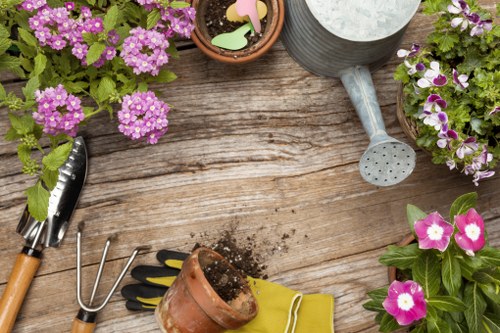
Introduction to Garden Maintenance in Yeading
Maintaining a beautiful garden in Yeading requires dedication, knowledge, and the right set of tools. Whether you're a seasoned gardener or a newbie, understanding the local climate, soil conditions, and plant varieties is crucial for a thriving outdoor space.
Yeading, located in the heart of London, offers a unique environment for gardening enthusiasts. The area's temperate climate and diverse flora provide ample opportunities for creating stunning gardens that flourish year-round.
In this article, we'll explore the essential aspects of garden maintenance in Yeading, from seasonal tasks to expert tips that ensure your garden remains vibrant and healthy.
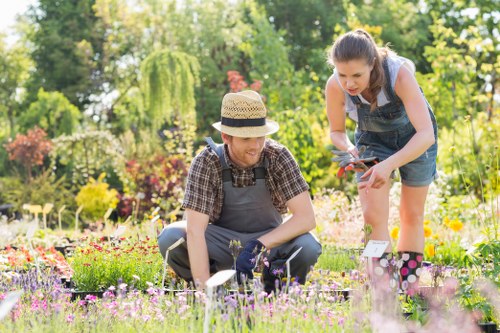
Understanding Yeading's Climate
Yeading experiences a temperate maritime climate, characterized by mild winters and warm summers. This climate is conducive to a wide range of plant species, but it also presents specific challenges that gardeners must address.
Temperature Variations: Yeading's temperatures rarely drop below freezing, making it easier to grow non-hardy plants. However, occasional heatwaves in summer can stress plants, requiring proper watering and shade.
Rainfall Patterns: The area receives consistent rainfall throughout the year, which benefits plants but can also lead to issues like soil erosion and plant diseases if not managed correctly.
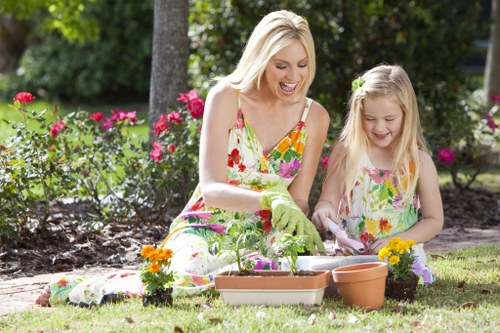
Soil Preparation and Maintenance
Testing Your Soil
Before planting, it's essential to test your soil to determine its pH level and nutrient content. Yeading's soil can vary, so understanding its composition helps in selecting the right plants and amendments.
Steps to Test Soil:
- Collect soil samples from different areas of your garden.
- Use a home testing kit or send samples to a local agricultural extension service.
- Analyze the results to identify deficiencies or imbalances.
Improving Soil Quality
Enhancing soil quality ensures that your plants receive the necessary nutrients for optimal growth. Incorporate organic matter, such as compost or well-rotted manure, to enrich the soil.
Tips for Soil Improvement:
- Add organic compost annually to maintain soil fertility.
- Use mulch to retain moisture and regulate soil temperature.
- Rotate crops to prevent soil depletion and reduce pest buildup.
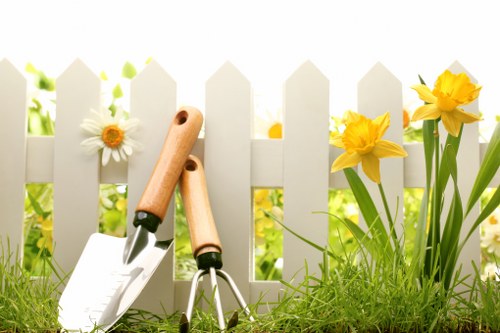
Seasonal Garden Maintenance Tasks
Spring Maintenance
Spring is the perfect time to prepare your garden for the growing season. Start by cleaning up any debris from the winter months and pruning dead or damaged branches.
Essential Spring Tasks:
- Prune trees and shrubs to encourage healthy growth.
- Plant new flowers and vegetables as the weather warms.
- Fertilize the soil to provide nutrients for upcoming plants.
Summer Care
During the summer, focus on watering, weeding, and protecting plants from excessive heat. Regular maintenance ensures that your garden remains lush and vibrant.
Summer Maintenance Tips:
- Water plants early in the morning to reduce evaporation.
- Use shade cloths or other protective measures for sensitive plants.
- Monitor for pests and diseases, addressing issues promptly.
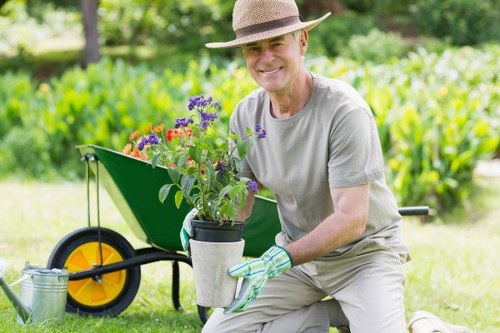
Choosing the Right Plants for Yeading Gardens
Selecting plants that thrive in Yeading's climate ensures a low-maintenance and aesthetically pleasing garden. Consider native species and those well-suited to local conditions.
Popular Plant Varieties
- Roses: Known for their beauty and fragrance, roses are a favorite among Yeading gardeners.
- Lavender: This hardy plant adds color and attracts pollinators.
- Hostas: Ideal for shaded areas, hostas provide lush foliage and subtle blooms.
Perennials vs. Annuals
Understanding the difference between perennials and annuals helps in planning your garden for continuous blooms and structure.
Perennials:
- Return year after year, reducing the need for replanting.
- Provide long-term structure and stability to garden beds.
Annuals:
- Offer vibrant, seasonal color.
- Allow for flexibility and creativity in garden design.

Pest and Disease Management
Maintaining a healthy garden involves proactive pest and disease management. Identifying problems early and using eco-friendly solutions can keep your garden thriving without harming the environment.
Common Pests in Yeading
- Aphids: Small insects that suck sap from plants, causing stunted growth.
- Slugs and Snails: These pests damage leaves and stems, particularly in damp conditions.
- Whiteflies: They feed on plant sap and can spread diseases.
Effective Disease Control
Diseases can spread quickly in gardens if not addressed promptly. Implementing good hygiene practices and using resistant plant varieties can minimize disease occurrence.
Prevention Tips:
- Remove diseased plant parts immediately.
- Ensure proper spacing between plants for adequate air circulation.
- Use organic fungicides as needed.

Lawn Care and Maintenance
A well-maintained lawn enhances the overall appearance of your garden. Regular mowing, fertilizing, and aerating are essential for a healthy turf.
Grass Selection
Choosing the right type of grass is crucial for a durable and attractive lawn. Consider factors like sunlight, soil type, and maintenance preferences when selecting grass varieties.
Popular Grass Types:
- Ryegrass: Fast-growing and ideal for overseeding.
- Fescue: Tolerates shade and has deep roots for drought resistance.
- Bermuda Grass: Excellent for sunny areas and withstands heavy foot traffic.
Lawn Maintenance Tips
- Mow regularly, keeping the grass at an optimal height.
- Water deeply but infrequently to encourage deep root growth.
- Aerate the soil annually to improve drainage and nutrient absorption.

Hardscaping and Garden Structures
Incorporating hardscaping elements like paths, patios, and garden structures adds functionality and aesthetic appeal to your garden.
Pathways and Walkways
Creating clear pathways enhances the usability of your garden and guides visitors through different areas. Choose materials that complement your garden's style, such as gravel, stone, or wood.
Design Ideas:
- Curved paths for a natural look.
- Stepped walkways on sloped terrains.
- Lighting along paths for safety and ambiance.
Garden Structures
Adding structures like pergolas, arbors, or sheds provides both practical storage solutions and attractive focal points.
Benefits of Garden Structures:
- Offer shade and shelter for plants and outdoor activities.
- Enhance the visual interest of your garden.
- Provide storage for tools and equipment.

Eco-Friendly Gardening Practices
Adopting eco-friendly practices not only benefits the environment but also promotes a healthier garden. Sustainable gardening reduces waste and conserves resources.
Composting
Composting recycles organic waste into nutrient-rich soil amendments, reducing the need for chemical fertilizers.
How to Start Composting:
- Choose a compost bin or designate a composting area.
- Combine green materials (kitchen scraps) and brown materials (dry leaves).
- Turn the compost regularly to aerate and speed up decomposition.
Water Conservation
Implementing water-saving techniques ensures that your garden remains hydrated while reducing water usage.
Water Conservation Tips:
- Install drip irrigation systems for targeted watering.
- Use rain barrels to collect and store rainwater.
- Mulch garden beds to retain moisture and suppress weeds.

Professional Garden Maintenance Services in Yeading
While DIY gardening can be rewarding, professional services offer expertise and efficiency, ensuring your garden receives the best care possible.
Benefits of Hiring Professionals
- Expert Knowledge: Professionals understand local conditions and plant care techniques.
- Time-Saving: Outsourcing maintenance tasks frees up your schedule.
- Quality Results: Experienced gardeners deliver consistent and high-quality outcomes.
Services Offered
Professional garden maintenance services in Yeading typically include:
Regular Lawn Care:
- Mowing, fertilizing, and aerating.
- Weed control and pest management.
- Seasonal overseeding and renovation.
Plant Care:
- Pruning and trimming of trees and shrubs.
- Planting and transplanting perennials and annuals.
- Soil testing and amendment application.

DIY Garden Maintenance Tips
If you prefer a hands-on approach, here are some DIY tips to keep your Yeading garden in top shape:
Effective Weeding
Regular weeding prevents unwanted plants from taking over and competing with your desired species.
How to Weed Effectively:
- Remove weeds before they set seeds to reduce future growth.
- Use mulch to suppress weed emergence.
- Hand-pull or use weeding tools for stubborn weeds.
Pruning Techniques
Proper pruning stimulates healthy growth and maintains the desired shape of your plants.
Pruning Tips:
- Use clean, sharp tools to make precise cuts.
- Prune in the appropriate season for each plant type.
- Remove dead or diseased branches to prevent spread.

Conclusion
Maintaining a garden in Yeading is a fulfilling endeavor that enhances your outdoor living space and contributes to the local ecosystem. By understanding the climate, preparing the soil, choosing the right plants, and implementing regular maintenance practices, you can cultivate a garden that thrives year-round.
Whether you opt for professional services or embrace DIY gardening, the key to success lies in consistent care and a passion for nurturing your green haven. Contact us today to learn more about expert garden maintenance services in Yeading or book your service now to transform your garden into a stunning retreat.

